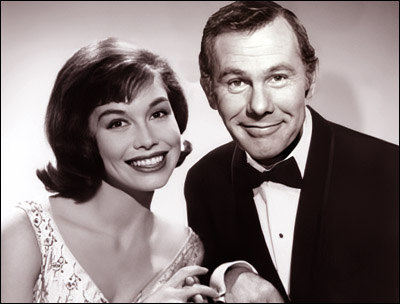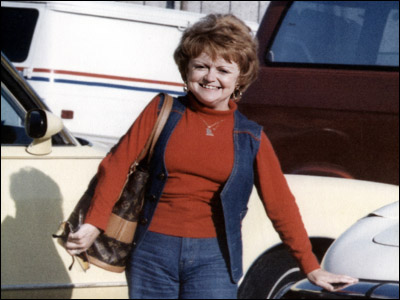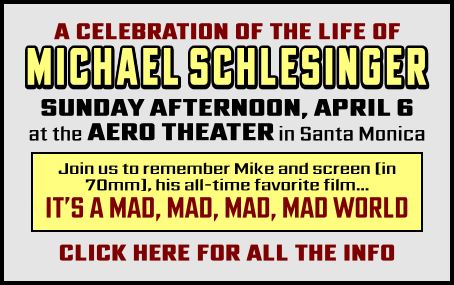WonderCon 2025 is history so I deleted the little unpaid ad I had for it in the right margin of this page. I don't charge for anything you see there, though I get a commission from a few. I know some of you were there for the con. In fact, I greatly enjoyed talking to some readers of this site who I'd never met. I also spent a lot of time seeing chums, hosting panels and showing my friend Gabriella around her first comic-type convention. Three very busy fun days.
Seven was the number of panels I hosted and/or appeared on. Two that I especially enjoyed involved another writer and Yours Truly. On one, Danny Fingeroth (who among his other credits wrote a biography of Stan Lee) and I (biographer of Jack Kirby) discussed those two men. I think some audience members came expecting a knock-down wrestling match but it was a civilized and interesting — some in the audience told me — conversation. On the other, Mark Waid and I just took questions from the audience. Mark expects to be at Comic-Con this July and Danny might be. I'll probably be doing sequels to these panels there with one or both, depending on who's around.
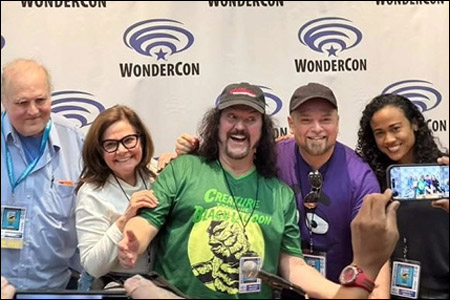
The Cartoon Voices panel was one of the funniest we've done. It consisted of, as seen left to right in the photo above: me, then Candi Milo, Wally Wingert, Daniel Ross and Kimberly Woods. There was also, at the end of the script reading we did, a surprise appearance by Cookie Monster, who devoured the script and attempted to feast on some Candi.
We had the annual Jack Kirby Tribute panel and our scheduled one-hour panels on Hanna-Barbera History and How to Write Animation kinda turned into one two-hour panel on how cartoons were made. Participating along with me were Brynne Chandler, Paul Dini, John Semper and Greg Ehrbar. I also guested on a panel that Gary Sassaman did on the history of the Fantastic Four and…well, I spent a lot of time talking about Jack Kirby. As I always do at conventions…happily.
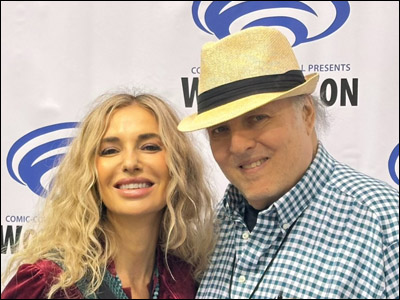
I enjoyed showing my friend Gabriella Muttone around her first-ever convention. Gabriella is an accomplished model and photographer, and she felt right at home among all the creative types to be found in and around the WonderCon exhibit hall. There were some remarkable arts 'n' crafts on display and you can't see it in the photo above but she bought a beautiful velvet blouse with a kind of medieval look to it. You can see some of her photography on her Instagram page but be careful. There's a video there of her dancing — in my bathroom, no less — to Frank Sinatra's version of the song I wrote about here back in this post. She also took the photo of me in the WonderCon program book…wearing the same hat as in the above photo.
Outside the hall as usual, one could find an amazing array of cosplayers, some of them in costumes that showed great craft and creativity. I like the way those folks seem to be getting away from merely trying to replicate existing characters from comics and movies and are more into original ideas. Then again, there was a Spider-Man there who looked more like the character than any photos I've seen from the movies. At least, he looked the part but when we rode up in the elevator together at the Anaheim Hilton, his spider-sense somehow did not alert him that he'd missed his floor.

My knees and left foot were acting up so I had to get around via wheelchair and Rollator. That's a Rollator in the above photo. In fact, it's the model that I have and it's been enormously handy since I fractured my ankle. I can walk but my balance is still a little off and I can't walk long distances. The advantage of the Rollator — and this is especially helpful wandering around a big convention — is that you always have that seat to sit on. No chairs around when you need to sit down for a sec? Sit on your Rollator.
If you're ever walking poorly or know someone who is, it's better than a walker for most purposes…and they're not as expensive as you might think. If you're still ordering from Amazon, they have 'em for a little over a hundred smackers. Other vendors have 'em for not much more. Caution: If you don't have the coordination to walk without one, you might not have the coordination to put one together. When I bought mine a year ago, I had my plumber do the assembly.
So…that was WonderCon and I can start looking forward to Comic-Con. I'd start packing but first, I have to unpack.
